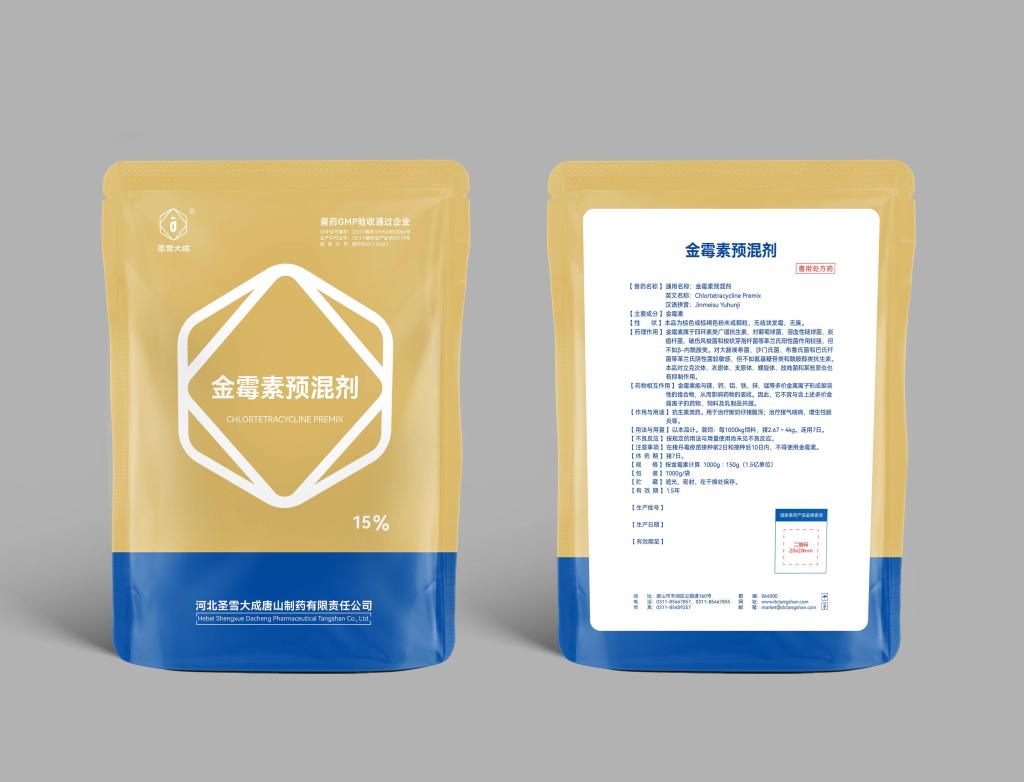Tel:+8618231198596

News
 CONTACT
CONTACT
 CONTACT
CONTACT
- Linkman:Linda Yao
- Tel: +8618231198596
- Email:linda.yao@dcpharma.cn
- Linkman:CHARLES.WANG
- Department:Overseas
- Tel: 0086 0311-85537378 0086 0311-85539701
News
Current Position:
Home >
News
>Chlortetracycline Premix: A valuable tool for managing herd health and productivity.
Chlortetracycline Premix: A valuable tool for managing herd health and productivity.
TIME:2024-05-31
Importance of Herd Health Management
Herd health management encompasses various practices aimed at optimizing the health and well-being of a group of animals:
Disease Prevention: Preventing diseases through vaccination, biosecurity measures, and the use of antimicrobials, such as CTC premixes, is essential for minimizing economic losses and maintaining herd productivity.
Nutrition and Feed Management: Providing balanced nutrition and high-quality feed is crucial for supporting optimal growth, reproduction, and overall health in livestock herds.
Reproductive Management: Managing breeding programs, monitoring reproductive performance, and providing reproductive healthcare services are vital for maximizing fertility rates and ensuring sustainable herd growth.
Environmental Management: Maintaining clean and comfortable living conditions, proper ventilation, and effective waste management practices are essential for preventing stress, disease transmission, and environmental contamination.
Effectiveness of Chlortetracycline Premix in Herd Health Management
Chlortetracycline premixes offer several benefits for managing herd health and productivity:
Disease Prevention: CTC premixes are effective in preventing and controlling bacterial diseases in livestock, such as respiratory and enteric infections, which can have significant economic consequences if left unchecked.
Growth Promotion: By modulating the gut microbiota and improving nutrient utilization, CTC premixes enhance feed efficiency and promote faster growth in young animals, leading to higher weight gains and improved profitability for producers.
Stress Reduction: Prophylactic use of CTC premixes during periods of stress, such as weaning, transportation, and environmental changes, helps mitigate the negative impacts of stress on immune function and overall health in livestock herds.
Reproductive Health: Maintaining herd health with CTC premixes can indirectly benefit reproductive performance by reducing the incidence of infectious diseases that may negatively affect fertility rates and reproductive outcomes.
Regulatory Considerations
The use of CTC premixes in livestock production is subject to regulatory oversight and considerations:
Antibiotic Stewardship: Regulatory agencies emphasize the importance of responsible antibiotic use in animal agriculture to mitigate the risks of antimicrobial resistance (AMR). Guidelines and regulations governing the use of CTC premixes aim to ensure their judicious use while preserving their efficacy for future generations.
Withdrawal Periods: Withdrawal periods, mandated by regulatory authorities, specify the duration between antibiotic administration and the time when treated animals can be slaughtered or their products (e.g., milk, eggs) can be harvested for human consumption. Compliance with withdrawal periods is essential to prevent antibiotic residues in food products and safeguard consumer health.
Veterinary Oversight: In many jurisdictions, the use of CTC premixes in animal feed requires veterinary oversight, including proper diagnosis, prescription, and administration. Veterinarians play a critical role in ensuring the responsible use of antibiotics and promoting herd health management practices.
Challenges and Considerations
While CTC premixes offer valuable benefits for herd health management, several challenges and considerations warrant attention:
Antimicrobial Resistance: The emergence and spread of AMR bacteria pose significant risks to animal and human health. Continued monitoring of AMR prevalence in livestock herds and efforts to mitigate AMR through responsible antibiotic use are critical.
Environmental Impact: Antibiotics excreted by treated animals can enter the environment through manure and wastewater, leading to the contamination of soil and water systems. Strategies to minimize environmental contamination, such as proper manure management and wastewater treatment, are essential.
Alternative Strategies: Exploring alternative disease prevention strategies, such as vaccination, probiotics, prebiotics, and phytogenics, can reduce reliance on antibiotics in animal agriculture while promoting herd health and productivity.
Future Prospects and Innovations
To address challenges and enhance the sustainability of herd health management, future efforts should focus on several key areas:
Research and Development: Continued research into alternative disease prevention strategies, novel antimicrobials, and vaccine technologies can provide new tools for maintaining herd health and productivity while reducing reliance on antibiotics.
Precision Livestock Farming: Advances in precision livestock farming, including real-time monitoring of herd health parameters, can enable proactive disease management and targeted interventions, minimizing the need for broad-spectrum antibiotic use.
Education and Training: Education and training programs for livestock producers, veterinarians, and industry stakeholders can promote awareness of responsible antibiotic use practices, antimicrobial stewardship principles, and the importance of herd health management in agricultural production.
Policy and Regulation: Collaborative efforts among governments, regulatory agencies, industry stakeholders, and advocacy groups are needed to develop evidence-based policies and regulations that balance the need for herd health management with ethical considerations and sustainability goals.
Conclusion
Chlortetracycline premixes play a valuable role in managing herd health and productivity in livestock production systems. By preventing diseases, promoting growth, and reducing stress, CTC premixes contribute to the overall well-being and profitability of livestock herds. However, their use must be guided by principles of responsible antibiotic use, regulatory compliance, and a commitment to sustainable herd health management practices. By embracing innovation, collaboration, and best practices, the livestock industry can continue to meet the growing demand for safe, nutritious, and responsibly produced animal products while safeguarding animal welfare and environmental health.
- Tel:+8618231198596
- Whatsapp:18231198596
- Chat With Skype







